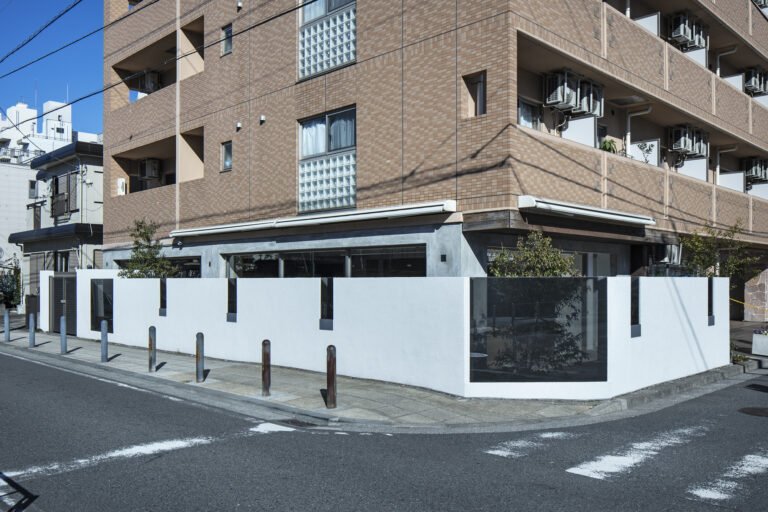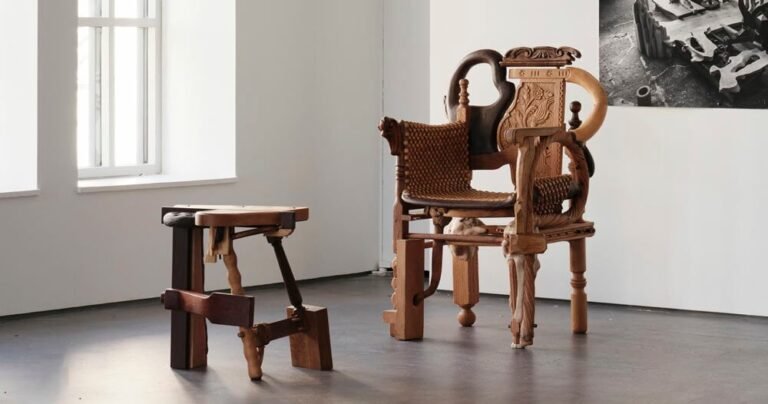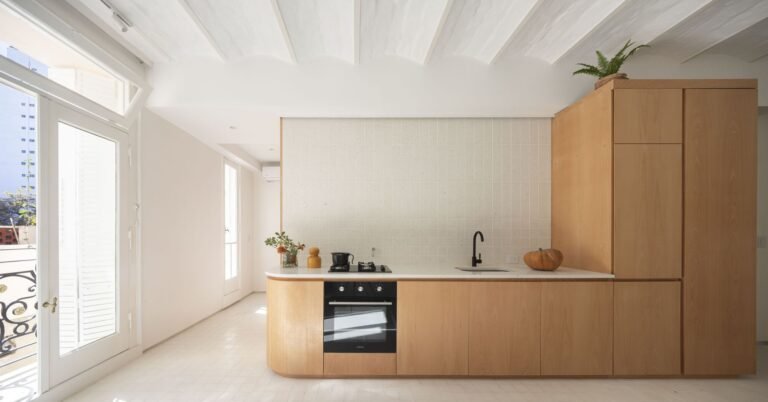OMA’s Taipei Performing Arts Center lifts theater spaces over a bustling night market
A glassy cube of epic proportions with strange protrusions has crash-landed at the southern edge of the Shilin Night Market, one of Taipei’s busiest centers of trade and tourism. A sphere hovers in space, visually fixed to the corrugated glass curtain wall and assisted by nothing other than a slender pair of pillars that terminate in the plaza several stories below. The fact that the hefty-seeming volume is also supported by an internal concrete frame is, even upon close inspection, neatly concealed by layers of sumptuous veneers.
Fourteen years in the making, the OMA-designed Taipei Performing Arts Center announces its purpose to its busy surrounds. From the nearby plaza, the cube’s rippling glass invites glances through the hall’s color-coded rooms: pink for rehearsal spaces, green for offices, and brown for lounge spaces. Viewed from inside the lobby, the load-bearing glass distorts the views out to the plaza. At night, when the box is fully illuminated, the various functions of this “machine for theater” become immediately legible, so that “the public [can] take visual ownership of it,” said Chiaju Lin, an OMA associate who headed up the project.


Though it appears light and ephemeral, the facade is sturdy enough to withstand everything from typhoons to earthquakes. (Both are common in the region.) Individual panels were fabricated in the Barcelona factory of renowned glass manufacturer Cricursa. The volumes that trisect it house theaters and are clad in a 3-millimeter-thick aluminum alloy normally reserved for manufacturing boats. It was shipped from Germany in large rolls to be fabricated near the site, where the glossy top-layer material was meticulously removed by hand. “We couldn’t find a grinding machine large enough,” said Lin, “so it had to be treated the old-fashioned way.” This treatment lends a subtle wave pattern to the panels that comes alive in highlights and shadows.


While the panels of the angular Grand Theater and Blue Box theater (together, they form the Super Theater) were installed as large rectangular sheets, the spherical Globe Playhouse required its own novel set of fabrication techniques. To form the outer panels, the sheets were machine-cut to a human scale so they could be welded together on-site, following a digital model. In a gesture of old-fashioned craftsmanship, the welding joints were then “erased” by hand, leaving behind a faint white grid pattern within the larger triangular panels.
“These human touches are deliberate elements of the final design,” Lin said. “They demonstrate that this ‘machine for theater’ was not itself made by machines, but a dedicated construction team.”


Architect: OMA (Rem Koolhaas and David Gianotten)
Architect of record: Kris Yao | ARTECH
Location: Taipei, Taiwan
Structural engineer: Evergreen Consulting Engineering Inc.
Structure, MEP, building physics, fire engineer: Arup
Theater equipment contractor: L&K Engineering Co. Ltd., IX Co. Ltd., JR Clancy
Facade construction: Sun-Sea Construction Co. Ltd.
Facade engineer: ABT, CDC Inc.
Corrugated glass: Cricursa
Aluminum manufacturer: Yu Lin Machine Company Ltd.





